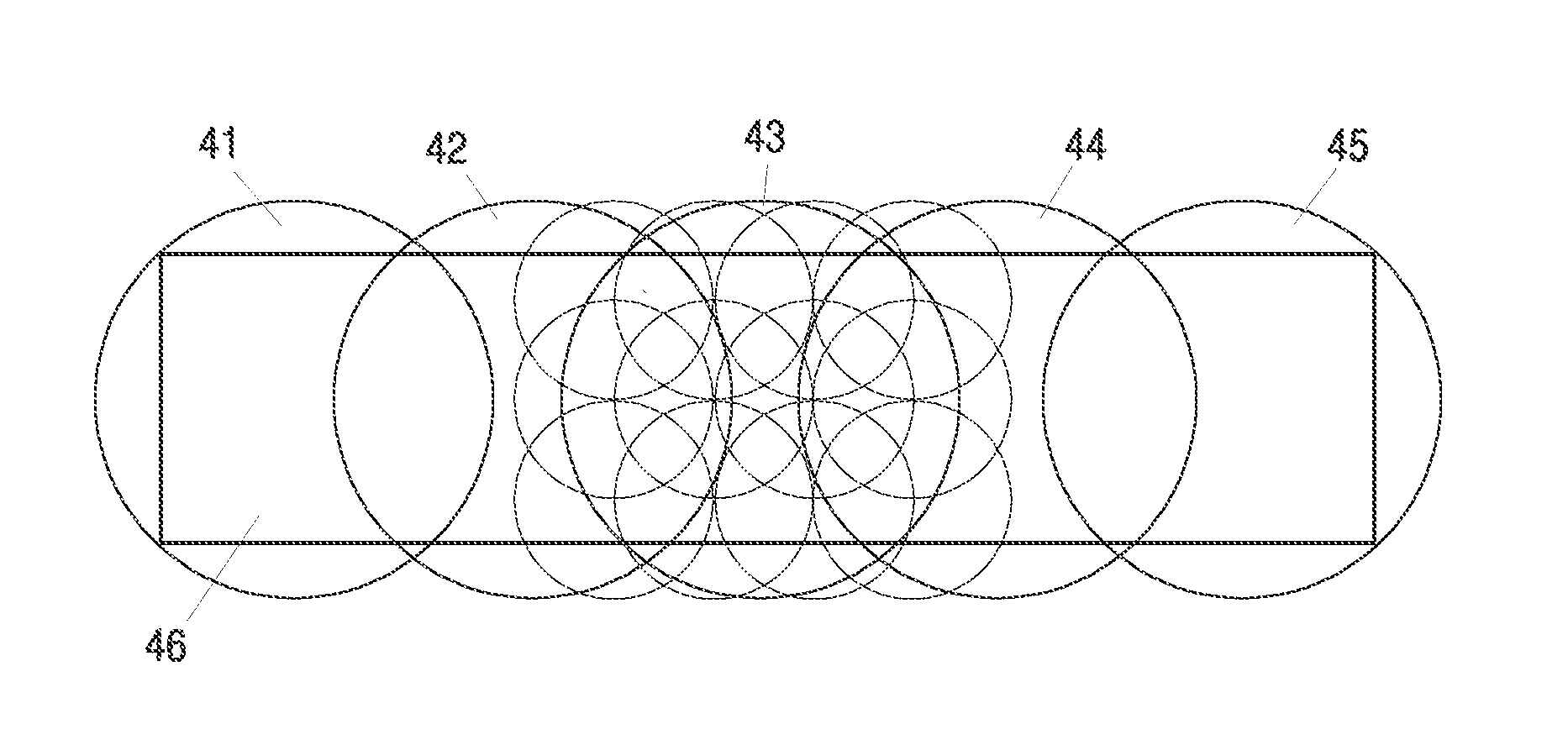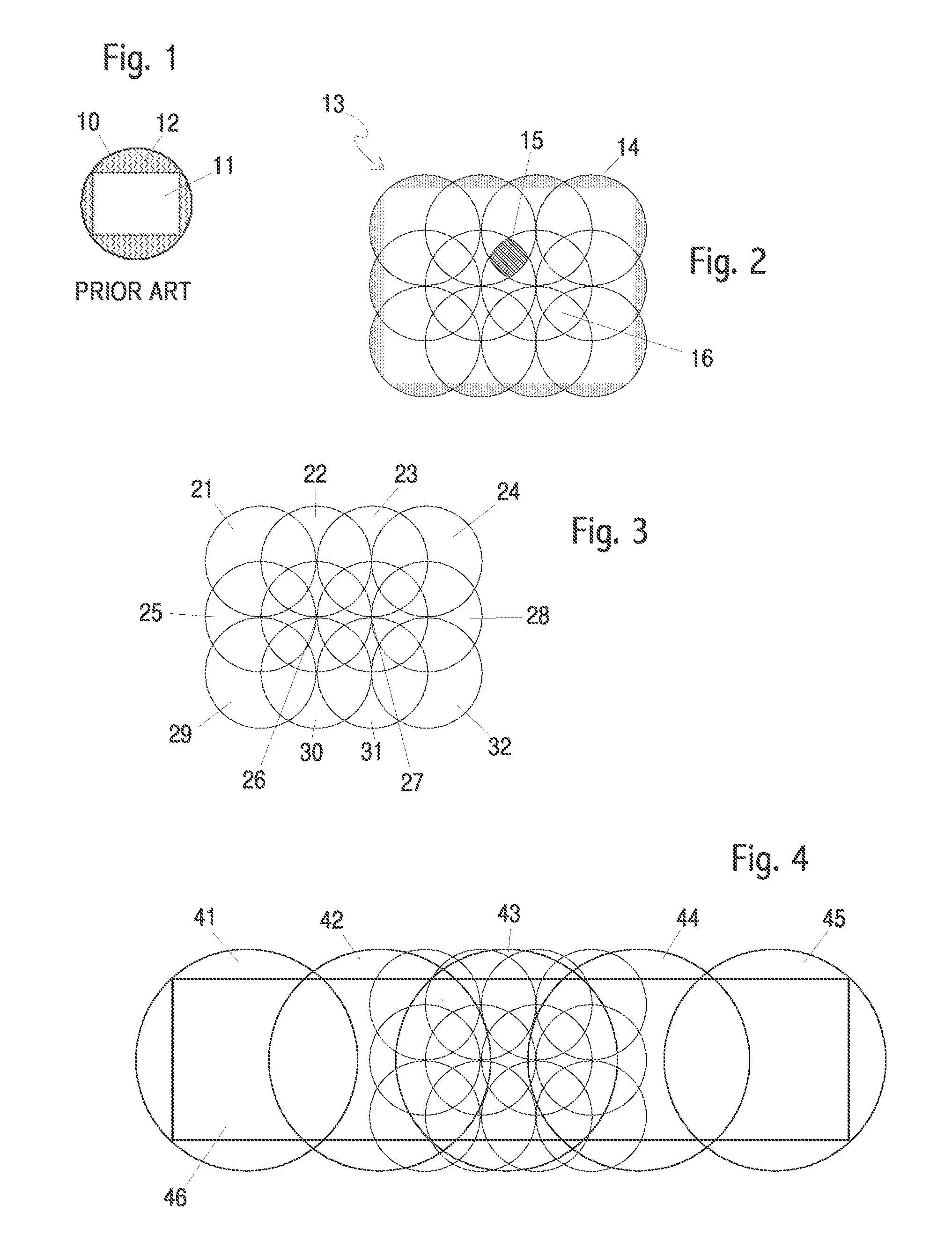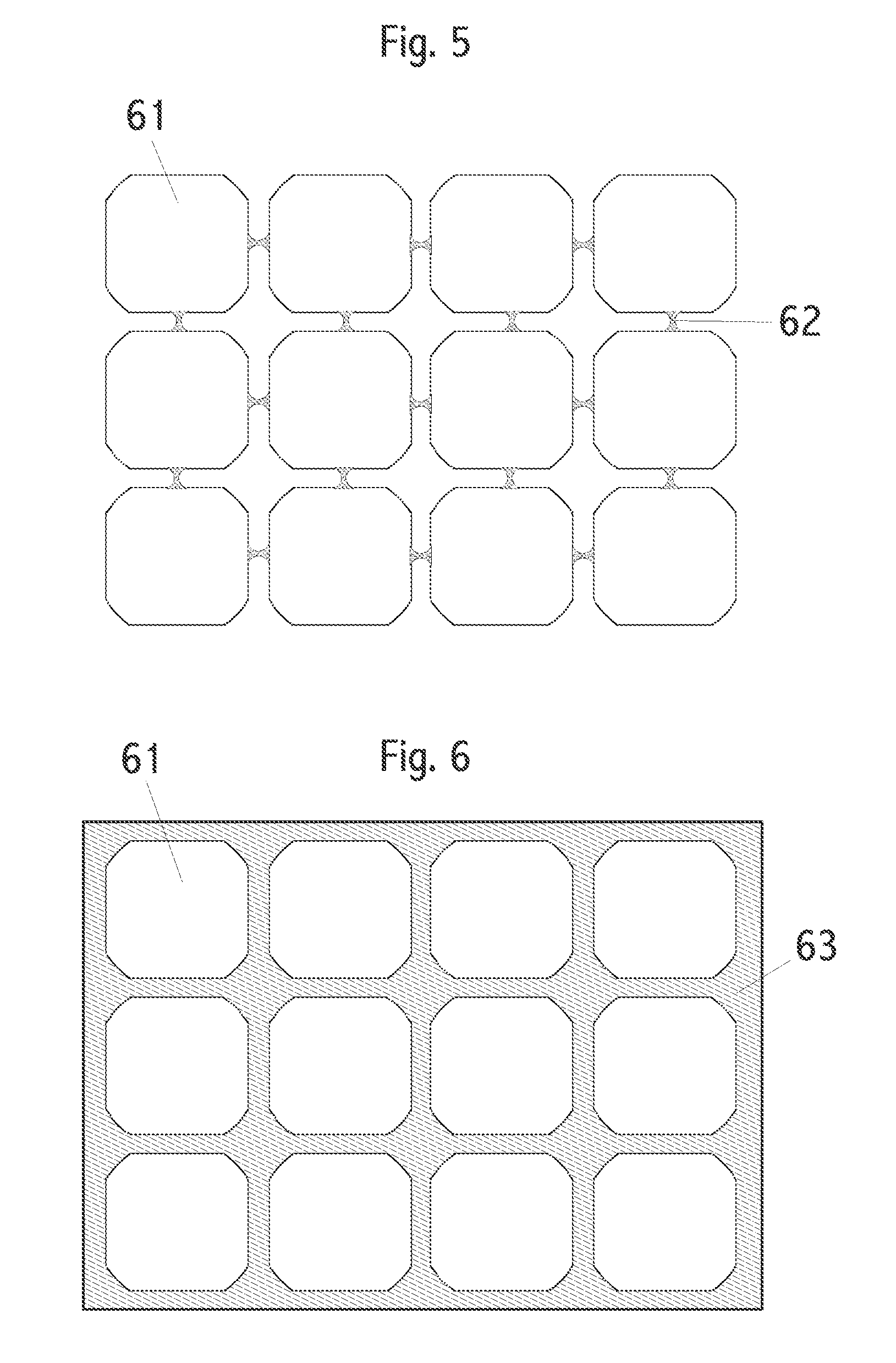Multi-lens camera
a multi-lens, camera technology, applied in the field of cameras, can solve the problems of incontiguous pixels of each color, inability to produce high-quality images for both visible light and infrared light without mechanical changes, and the cost difference between small and large lenses is increased by scale. to achieve the effect of determining the boundary of objects
- Summary
- Abstract
- Description
- Claims
- Application Information
AI Technical Summary
Benefits of technology
Problems solved by technology
Method used
Image
Examples
Embodiment Construction
[0094]FIG. 1 shows prior art with a round image area in the image plane 10 and a portion of that area used by a rectangular sensor 11. The filled area 12 shows the “wasted” portion of the image area created by the lens but not used by the sensor and not available to the user of the camera.
[0095]FIG. 2 shows one embodiment with a four by three array of lenses creating an approximately rectangular image area 13 in the effective computed image plane of the camera. An exactly rectangular region is shown inside the shaded area 14. Note that this area shown in this Figure is a virtual image plane, as the actual sensors for the twelve lenses are not overlapping as the circles in this Figure. The twelve circles in this Figure represent the imaging areas in a final photograph where each circle is the available portion of the final photograph from one lens / sensor pair. This Figure shows how the twelve images would be overlapped to create the effective final rectangular image inside the shaded...
PUM
| Property | Measurement | Unit |
|---|---|---|
| size | aaaaa | aaaaa |
| Wavelengths | aaaaa | aaaaa |
| Wavelengths | aaaaa | aaaaa |
Abstract
Description
Claims
Application Information
 Login to View More
Login to View More - R&D
- Intellectual Property
- Life Sciences
- Materials
- Tech Scout
- Unparalleled Data Quality
- Higher Quality Content
- 60% Fewer Hallucinations
Browse by: Latest US Patents, China's latest patents, Technical Efficacy Thesaurus, Application Domain, Technology Topic, Popular Technical Reports.
© 2025 PatSnap. All rights reserved.Legal|Privacy policy|Modern Slavery Act Transparency Statement|Sitemap|About US| Contact US: help@patsnap.com



